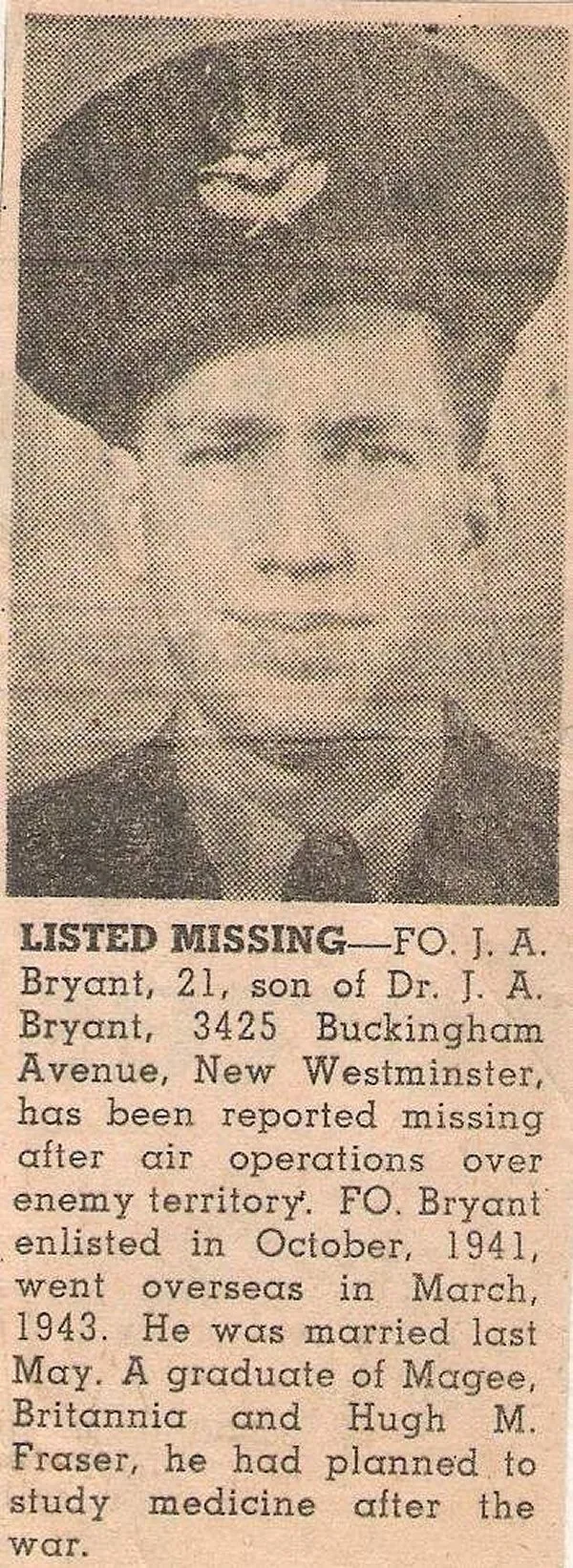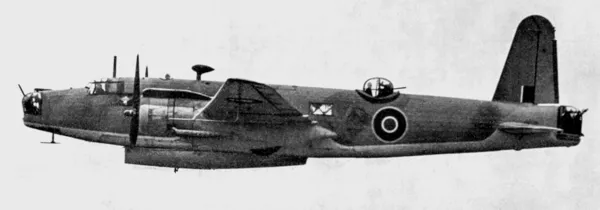Bryant, James Alfred
Killed in Action 1944-11-20


Birth Date: 1923-April-24
Born:
Home: New Westminster, British Columbia
Enlistment:
Enlistment Date: Unknown
Service
RCAF
Unit
279 Sqn- Squadron (RAF)
Base
RAF Bircham Newton
Rank
Flying Officer
Position
Flying Officer
Service Numbers
J/20810
First Burial
 Runnymede Memorial Surrey, Uk
Runnymede Memorial Surrey, Uk
Vickers Warwick

From 1943, Warwicks were loaded with the 1,700 lb (770 kg) Mk. IA airborne lifeboat and used for air-sea rescue. The lifeboat, designed by yachtsman Uffa Fox, laden with supplies and powered by two 4 hp (3.0 kW) motors, was aimed with a bombsight near to ditched air crew and dropped by parachute into the sea from an altitude of about 700 ft (210 m). Warwicks were credited with rescuing crews from Halifaxes, Lancasters, Wellingtons and B-17 Flying Fortresses, and during Operation Market Garden, from Hamilcar gliders, all of which ditched in the English Channel or the North Sea.
The Vickers Warwick was a multi-purpose twin-engined bomber, named after the British city of Warwick. The Warwick was the largest British twin-engined aircraft to see use during the Second World War. The Warwick was designed and manufactured by Vickers-Armstrong during the late 1930s. It was intended to serve as a larger counterpart to the Vickers Wellington bomber. The two aircraft share similar construction and design principles but unlike the smaller Wellington bomber, development of the Warwick was delayed by a lack of suitable high-powered engines.
The Warwick entered quantity production during 1942 and squadron service with the RAF. It was superseded as a bomber and only 16 of the planned 150 Warwick bombers were completed. The type was used by the RAF in RAF Transport Command and by RAF Coastal Command as an air-sea rescue, troop and cargo transport, long range anti-submarine patrols and general reconnaissance and operational crew training.
By January 1943, a total of 57 Warwick Mk. I aircraft had been completed; that month, it was decided that the Warwick would be the standard transport and air-sea rescue aircraft. During mid-1943, a Warwick Mk. I was converted to become the Warwick Mk. II prototype; the principal difference was the fitting of Centaurus IV engines. A total of 219 Warwick Mk I aircraft were constructed, the last 95 of these with 2,000 horsepower (1,500 kW) R-2800-47 engines.Harold A Skaarup Web Page
 Canadian Virtual War Memorial
Canadian Virtual War Memorial Commonwealth War Graves Commission
Commonwealth War Graves Commission www.findagrave.com
www.findagrave.com Wikipedia Vickers Warwick
Wikipedia Vickers Warwick Harold A Skaarup Web Page
Harold A Skaarup Web Page